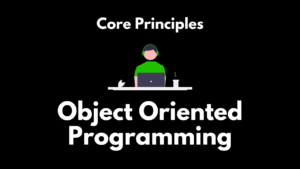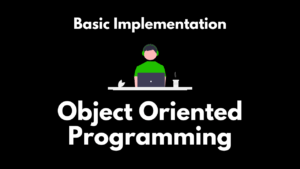programming language and natural language reveals a captivating contrast in structure, purpose, and the way they interact with the world around them.
In our daily lives, we navigate between Programming language and natural language, two distinct but fascinating landscapes of language: the vibrant, ever-evolving world of natural languages like English, and the precise, logical realm of programming languages like Python or Java. Though seemingly dissimilar, both serve as powerful tools for communication, but with vastly different targets and goals.
let’s study the differences between programming language and natural language.
Formal vs. Flexible
Perhaps the most striking difference lies in their structure. Natural languages are inherently flexible, with fluid syntax and a tolerance for ambiguity. We rely on context, shared understanding, and non-verbal cues to decipher meaning.
Imagine the sentence “It’s raining cats and dogs!” While nonsensical in a literal sense, the context readily conveys the speaker’s message about heavy rain.
Programming languages, on the other hand, demand rigidity. Their syntax is strictly defined, with every comma and semicolon carrying weight. Errors, even typographical ones, can lead to catastrophic malfunctions. Think of it like building a bridge: any missing rivet could jeopardize the entire structure.
Instruction vs. Communication
The purpose of each language further defines their distinct nature. Natural languages are primarily tools for communication and expression. We use them to share thoughts, stories, and emotions, allowing us to connect with others on a deeper level.
Programming languages, in contrast, focus on instructing and controlling. They allow us to communicate with machines, giving them precise instructions to perform specific tasks. Imagine ordering a coffee: in natural language, you might say “Can I please have a latte?” But a coffee machine needs a more specific protocol, like “Espresso: 1 shot; Milk: Steamed; Temperature: Hot.”
Beyond Words
While both rely on words and symbols, the way they process and interpret them differs significantly. Natural languages are rich with nuances and ambiguity. We readily understand multiple meanings, infer subtext, and adapt our interpretations based on context. We can even invent new words or bend grammar rules for artistic expression.
Programming languages, however, are literal and logical. Every word has a predefined meaning, and every symbol plays a specific role within the overall structure. There’s no room for vagueness or playful experimentation.
Evolution
Both natural and programming languages are dynamic and constantly evolving. New words and slang emerge in spoken languages, while programming languages adapt to new technologies and user needs. However, the rate of change differs vastly. Natural languages evolve organically through everyday usage, influenced by cultural trends and interactions.
Programming languages, on the other hand, are often designed and updated by a smaller group of developers, following specific goals and timelines.
Understanding the differences between these two unique language systems not only enhances our appreciation for each, but also sheds light on the complex ways we interact with technology and the world around us. While natural language fosters connection and creativity, programming language empowers us to build, control, and ultimately shape the digital world. As technology continues to weave itself into the fabric of our lives, recognizing the distinct voices of these two languages becomes increasingly crucial for navigating the multifaceted landscape of communication in the 21st century.
Examples of Programming Language and Natural Language
Formal vs. Flexible
Natural Language: “I saw a flock of birds.” (Flexible sentence structure, open to interpretation – were they flying, singing, or just sitting?)
Programming Language: print(“There are 10 birds in the tree.”) (Precise syntax, every element has a defined meaning, no ambiguity, formal)
Instruction vs. Communication
Natural Language: “Hey, could you pass me the salt?” (Indirect request, relies on context and shared understanding, communication)
Programming Language: robot_arm.move_to_position(x=10, y=5, z=2) (Explicit instructions, each element defines a specific action)
Beyond Words
Natural Language: “The weather is chilly today.” (Literal meaning + figurative sense of “chilly” to describe the atmosphere)
Programming Language: if temperature < 10: print(“It’s cold!”) (Literal interpretation of temperature value, no figurative language)
Evolution
Natural Language: “OMG” becoming a common way to express surprise.
Programming Language: Python introducing “async” keyword for asynchronous programming.
Bonus Example:
Humor in Language: A joke in natural language relies on wordplay, double-entendre, or unexpected turns. A “bug” in a program is a literal error, not a humorous play on words.
Remember, these are just simplified examples. The intricacies of each language are vast and fascinating!I hope these examples help illustrate the differences in a more accessible way.






